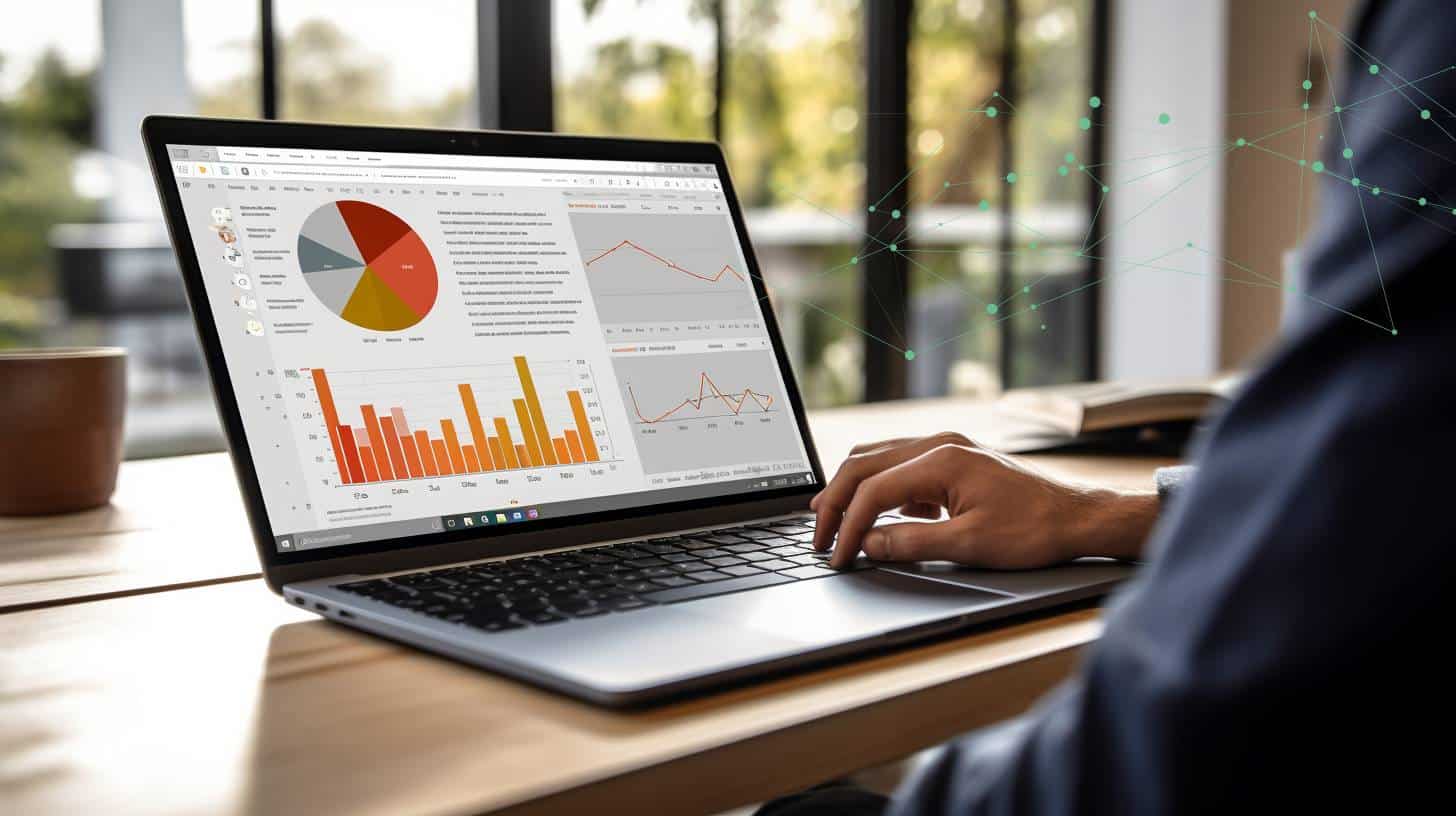Pay-Per-Click (PPC) is a digital advertising model where advertisers pay a fee each time one of their ads is clicked. It’s a way of buying visits to your site, rather than attempting to “earn” those visits organically. PPC is commonly associated with search engines like Google Ads and social media platforms including Facebook Ads. In this model, advertisers bid for ad placement in a search engine’s sponsored links when someone searches on a keyword that is related to their business offering. PPC allows advertisers to target specific audiences and measure the effectiveness of their ads in real time. PPC advertising is one of the primary tools that B2B marketers use to increase brand awareness, generate leads, and drive conversions. Have you ever carefully strategized and implemented a marketing campaign only to be left wondering, “How will I know if I’ve succeeded?” You’re not alone. Measuring campaign success is an essential first step but, for those numbers to have meaning, you’ve got to compare your data to PPC SaaS marketing benchmarks.
Context is everything. Answering three out of ten questions correctly on a test will earn a student a failing grade, but a sustaining .300 batting average over a lengthy career will land a baseball player in the Hall of Fame. LinkedIn reports that, in part because of optimistic budget expectations, “Around half of B2B leaders say they are optimistic they will be able to drive revenue in the coming year.” Yet even experienced professionals can find themselves unsure about the best ways to interpret and leverage metrics to quantify and support a marketing plan for SaaS, especially one that includes pay-per-click campaigns.
KPI benchmarks provide a clear picture of campaign performance, establishing a baseline from which growth can be measured. This insight is invaluable for identifying strengths to capitalize on and weaknesses to address. The challenge is that PPC advertising for SaaS is nuanced, and benchmarks that have been established for other industries are not always accurate for SaaS. It’s essential to compare your success to directly relevant benchmarks. More importantly, however, in an industry known for constantly shifting customer behaviors, market trends, and competitive dynamics shift, agility is key. Comparing your metrics to SaaS-specific benchmarks lets you know when and how to pivot by signaling the need to tweak an ad campaign, revise email marketing strategies, or reshaping overall messaging.
Let’s take a deep dive into SaaS marketing benchmarks around common marketing tactics. We’ll look at what they are and why they matter, examine SaaS industry benchmarks in relation to those that apply in the broader business world, and give you the KPIs that the expert SaaS marketers at Bay Leaf Digital use to determine success.
PPC SaaS Marketing Benchmarks You Should Know
Monitoring key PPC benchmarks is essential to optimize ad spend and maximize ROI. Before we move on, let’s begin by defining two terms that will be relevant to any PPC campaign.
Cost Per Click (CPC) is a digital advertising model where advertisers pay only when their ad is clicked, not for impressions or views. CPC varies based on keyword competitiveness, ad quality, and target audience. This metric quantifies strategy quality and campaign cost-effectiveness.
Click-Through Rate (CTR) measures the rate at which viewers click on ads. By quantifying viewer engagement, CTR lets you know which ads are most timely, pertinent, and effective.

Google Ads Specific Metrics
Marketers love Google Ads, and with good reason. Almost half of all product searches begin on Google. Paid ads on Google are a great way to get your product in front of high-intent, bottom of the funnel users who are actively searching for a solution to their pain point. In addition to CTR and CPC, be sure to measure these metrics unique to Google Ads:
- Impression Share represents the percentage of times your ads were shown out of the total number of times they could have been shown, based on your current ad settings and keyword bids. It is calculated by dividing the number of impressions your ad received by the estimated number of impressions it was eligible to receive. Comparing your results to the benchmark will clarify the effectiveness of your ad campaigns in terms of visibility and reach and can be used to identify opportunities for improving ad performance by adjusting bids, budgets, or targeting settings.
- Quality Score gives an estimate of the quality of your ads, keywords, and landing pages. It’s reported on a 1-10 scale and is based on factors like click-through rate (CTR), the relevance of each keyword to its ad group, landing page quality and relevance, and the historical performance of your Google Ads account. Compare your quality score to the benchmark to understand how well your ads are likely to perform, allowing you to make informed decisions and optimize ad campaigns for better performance and efficiency.
- Relative Click-Through Rate (Relative CTR) compares the click-through rate of your ads to the CTR of other ads running in the same locations on websites within the Google Display Network, helping you understand how your ads perform in comparison to competing ads. A higher Relative CTR indicates that your ads are more effective in attracting clicks than those of your competitors, suggesting higher relevance or better engagement with the target audience. This comparison can be instrumental in assessing and improving the competitiveness of your ad campaigns on the Display Network.
Successful Google Ad metrics for SaaS are not the same as for a broader cross-section of industries. To maximize the effectiveness of your next B2B SaaS Google Ad campaign, be sure to compare your results to the following SaaS marketing benchmarks:
| Metric | Cross-Industry Benchmark | B2B SaaS Benchmark |
| Click-Through Rate (CTR)1 | 1.6% | 2.1% |
| Cost per Click (CPC) | $4.222 | $3.33-$3.803 |
| Conversion Rate4 |
1.3% | 1.0% |
| Cost per Conversion | $53.525 | $3106 |
LinkedIn Ads Metrics
By connecting B2B SaaS marketers with professionals seeking tailored solutions within their industry, LinkedIn Ads are an unparallelled tool for targeting middle and bottom of the funnel professionals and offering them a solution to their unique pain points. The platform’s targeting capabilities allow you to narrow your audience by job title, industry, company size, and professional interests, ensuring your ads reach the individuals most likely to be interested in your offering. In addition to CPC and CTR, marketers seeking to optimize SaaS PPC on Linked in should monitor:
- Lead Gen Form Fill Rate: LinkedIn’s embedded lead generation forms facilitate the collection of leads directly within the ad environment. Measuring the Form Fill Rate quantifies the percentage of users who complete the form after clicking on the ad. A high fill rate indicates effective ad copy and a compelling offer that resonates with the target audience, while a lower fill rate suggests the need for optimization in targeting, ad creative, or the offer itself.
- Engagement Rate: Engagement rate on LinkedIn includes actions such as likes, shares, comments, and clicks. It measures how interactively users are responding to your ads. A high engagement rate signifies that your content is relevant and attractive to your target audience, fostering brand awareness and consideration.
| Metric | Cross-Industry Benchmark 7 | B2B SaaS Benchmark
(based on our experience) |
| Click-Through Rate | .54% | 0.8 – 1.5%
1.5-2% for re-targeting campaigns |
| Cost per Click | $8-10 | $15-18 |
| Lead Gen Form Fill Completion Rate | 10.26% | 18-25%
30+% for re-targeting campaigns |
| Engagement Rate | 1.00% | 2.5-3% |
Facebook Metrics
Facebook ads are effective tools for B2B SaaS marketers aiming to foster community engagement and expand brand awareness among top of the funnel audiences. With their broad audiences, both platforms will help you introduce your brand, engage in meaningful interactions, and gently guide potential customers through the initial awareness stage. The sophisticated targeting options on these Meta-owned channels enable marketers to precisely target diverse groups by characteristics including interests, behaviors, demographics, and location, then engage potential customers with interactive ad formats designed to capture attention and encourage engagement. Marketers wondering about measuring their PPC campaign success on Facebook and Instagram should carefully monitor conversion rates and cost in addition to CPC and CTR.
| Metric | Cross-Industry Benchmark | SaaS Benchmark |
| Click-Through Rate8 | 1.49% | 1.12% |
| Cost per Click9 | $0.40 | $0.55 |
| Conversion Rate10 | 9.21% | 10.63% |
| Cost per Conversion11 | $18.68 | $23.77 |
The Most Critical of All SaaS Marketing Benchmark Metrics
No matter which metrics a marketer decides to measure, there’s only one reason for monitoring B2B SaaS marketing campaigns: to quantify Return on Investment (ROI), the most crucial benchmark in any business endeavor. To drive revenue and boost the bottom line, every strategy, every campaign, and every data point must maximize ROI. Comparing your results to SaaS marketing benchmarks can help. That comparison will indicate whether your campaign is resonating, show you where you need to improve, and let you know which levers to pull. However, setting the right ROI target is a nuanced undertaking that requires careful consideration. Here are five reasons that a one-size-fits-all approach doesn’t work:
- Quantity vs. Quality: Generating a high volume of leads doesn’t necessarily equate to success. If these leads are of poor quality, fall outside your Ideal Customer Profile (ICP), or are consistently rejected by sales, their value diminishes. Quality is more important than quantity, so be sure to target and nurture the right leads.
- Industry-Specific Dynamics: Across industries, prospects interact with content and engage with brands to varying degrees. Some may be more receptive and actively seeking solutions, while others might be overwhelmed by choices or slow to adopt new technologies. Expect these to affect ROI.
- Channel-Specific Variability: No single channel guarantees success for all businesses. Each platform has its strengths and caters to specific user behaviors. Your SaaS offering might resonate more on LinkedIn than on Instagram, or the reverse might be true. Plan on conducting extensive testing to identify the most effective channels for your campaigns.
- Competitive Density: The competitive landscape can significantly impact your marketing ROI. If deeper pockets mean that your competitors can dominate ad spaces with higher bids, your campaigns might struggle to achieve the desired reach and frequency, making it challenging to stand out.
- Multiple Variables: Numerous elements contribute to benchmark success. A great campaign combines creative content, compelling offers, precise audience targeting, appropriate budget allocation, and optimized forms. A misjudgment in any one of these areas can torpedo ROI.
To maximize ROI for your next campaign, be sure to:
- Embrace a holistic view: Consider all aspects of your campaign and how they interact to influence overall success.
- Customize your benchmarks: Tailor your ROI expectations based on your industry, target audience, and competitive environment.
- Focus on continuous improvement: Use benchmarks not as definitive targets but as indicators for ongoing optimization.
Partner with Experts to Beat B2B SaaS Marketing Benchmarks
The best way to meet and beat SaaS marketing benchmarks is by partnering with an expert B2B SaaS PPC agency like Bay Leaf Digital. Our experienced specialists know how to tailor marketing strategies and implement campaigns that maximize each advertising channel and align with industry-specific challenges and opportunities. Their efficient and effective approaches consistently exceed benchmarks across verticals, securing a competitive edge and driving ROI.



